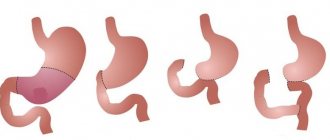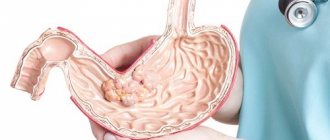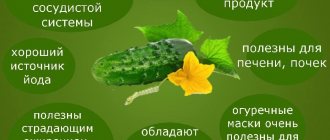General rules
Gastrectomy is an operation to completely remove the stomach with a direct connection of the esophagus to the small intestine. The most common indications for gastrectomy are: stomach cancer , diffuse polyposis , perforation of the stomach wall, advanced peptic ulcers with bleeding.
If the indication for gastrectomy is cancer, then an extended gastrectomy is performed (at the same time the omentum, spleen and regional lymph nodes are removed). As a result, due to the absence of a stomach (an organ for mechanical/chemical processing of food) and the entry of food directly from the esophagus into the small intestine, new specific anatomical and physiological conditions for the digestion process are formed in the body.
Adaptation of the body to new nutritional conditions takes quite a long time (8-12 months) and is often accompanied by complications such as:
- Reflux esophagitis is an inflammation of the esophagus caused by the reflux of bile and jejunal contents into it.
- Dumping syndrome : caused by the rapid entry of large volumes of insufficiently processed food from the esophagus into the small intestine and is manifested by sweating , weakness, dizziness , palpitations, and sometimes single vomiting after eating.
- Anemic syndrome.
- Progressive weight loss.
Nutrition after gastrectomy is the most important component of the rehabilitation process. Diet therapy for a removed stomach includes several stages and begins with the sequential administration of strict surgical diets (0A, 0B, 0B). On the first or second postoperative day, the patient is advised to fast. From 2-3 days the patient is allowed to give weak tea, mineral water, rosehip decoction, and slightly sweetened jelly.
If intestinal function does not suffer, from 4-5 days the diet is expanded with vegetable puree soups, soft-boiled eggs, steamed curd soufflé, buckwheat/rice liquid porridge. On days 8-9, mashed potatoes and steamed fish balls/meatballs are added to the diet. From 14-15 days the patient is transferred to the pureed version of Diet No. 1 or surgical 1.
The most important task of a therapeutic diet for people without a stomach is to overcome protein and vitamin-mineral deficiency that occurs in most patients due to insufficient/malnutrition in the first postoperative days, the breakdown of tissue proteins, blood loss and fever . Therefore, from 4-5 days onwards, each meal should contain protein products, and it is necessary to transfer the patient to a physiologically nutritious diet as early as possible, including a wide range of products, taking into account the body’s ability to digest food.
All dishes are steamed/boiled and wiped thoroughly. Preference should be given to protein foods. The diet includes low-fat broth, pureed vegetable soups with cereal broths, dishes from lean beef/chicken and fish (pike perch, cod, carp, hake), steamed omelet/soft-boiled eggs, milk as part of the dishes. It is allowed to include boiled vegetables in the diet and serve them in the form of puree - potatoes and carrots, cauliflower, stewed zucchini and pumpkin. You can prepare viscous porridges/casseroles (without sugar) from cereal products (rice, oatmeal, buckwheat).
Vegetable oil, butter and sour cream can only be used as a seasoning for ready-made dishes. It is recommended to prepare jelly/mousse/jelly from fruits. Dried bread can be included in the diet no earlier than a month after surgery. Fruit juices and unsweetened tea are allowed. You can drink kefir 1.5-2 months after surgery.
The diet includes the exclusion from the diet of baked goods, pickles, marinades, smoked meats, offal, fatty meats, canned food, sausages, legumes, chocolate, ice cream, mushrooms, raw vegetables (white cabbage, onions and garlic, radishes, spinach, sorrel), coffee , carbonated drinks.
In order to prevent dumping syndrome, foods containing easily digestible carbohydrates (sugar, honey, jam, sweets) are limited in the diet. The range/volume of food intake must be expanded gradually. So, in the first two weeks, the portions are increased: to 50 ml on the 3rd day, to 200/250 ml on the 7th day and to 300/400 ml on the 10th day. The amount of liquid should not exceed 200 ml at a time.
If the patient has concomitant diseases of the gastrointestinal tract ( pancreatitis , colitis ), then changes are made to the diet. constipation occurs, you should include boiled beets, vegetable juices, and prune decoction in your diet. After 4-6 months, if the patient’s condition is normal, it is allowed to gradually switch to an unprocessed version of the diet. At the same time, nutritional rules, methods of culinary processing of products and restrictions remain the same.
Nutrition after removal of the stomach due to cancer requires special attention. In this case, preoperative preparation is necessary, including a high-calorie diet, especially against the background of preoperative/postoperative chemotherapy , accompanied by a persistent decrease in appetite, changes in taste/smell, which contributes to the development of nutritional deficiency.
As a rule, stage 2-4 cancer patients already have nutritional deficiency (deficiency of nutritional supplements, vitamins and minerals), which is due to a sharp acceleration of catabolism and inhibition of protein synthesis. Therefore, in the preoperative period, the diet of cancer patients should have a calorie content of 4000-4500 kcal/day in order to eliminate/reduce protein-energy deficiency if possible.
Modern approaches to the management of cancer patients with nutritional deficiency in the preoperative period suggest the start of the introduction of enteral nutritional mixtures 12-14 days before surgery, if it is assumed that the patient after surgery will take less than 60% of the volume of adequate nutrition for 7-10 days. This makes it possible to more effectively correct immune deficiency/nutritional deficiency and prepare the body for surgery and chemotherapy.
Accordingly, in the postoperative period, if the patient is prescribed complete endogenous nutrition, this will lead to a rapid (catastrophic) depletion of BZH reserves. Therefore, the diet after removal of the stomach for cancer involves the introduction of protein enpit (40 g / 200 ml of water) in the first 24 hours of 30-50 g of solution through a nasointestinal tube inserted into the anastomosis, and later, orally, taking into account the energy needs of cancer patients, which averages 25/30 kcal/kg/day, and in cases of severe nutritional deficiency - at least 35 kcal/kg/day.
The choice of nutritional mixture and the duration of its use is determined by the metabolic needs of the patient and the functional state of the gastrointestinal tract. As practice shows, the use of nutritional mixtures enriched with nucleotides, arginine and omega-3 fatty acids makes it possible to more effectively eliminate nutritional deficiency and improve the patient’s nutritional status.
Preventive diet
It has been proven that a healthy and varied diet, quitting smoking, and maintaining a normal weight along with regular physical activity help prevent cancer. There are no foods that definitely lead to malignant processes, but adequate consumption of fruits and vegetables rich in vitamins and microelements while limiting “dark” animal meat helps maintain health. This is a good prevention of malignant processes in the stomach.
Contact a specialist at the European Clinic to find out how to increase the effectiveness of antitumor treatment, as well as what diet is indicated specifically in your case.
Book a consultation 24 hours a day
+7+7+78
Bibliography:
- Obukhova O.A., Bagrova S.G., Besova N.S. et al. /Assessment of the nutritional status of patients with inoperable gastric cancer at the time of initiation of antitumor treatment. Preliminary results of a prospective observational study // Difficult patient; 2018; 6.
- Potapov A.L., Dorozhkin A.D., Gamayunov S.V. and others /Perioperative nutritional support for gastric cancer: current state of the issue// Siberian Journal of Oncology; 2019; 18(6).
- Snegova A.V., Kononenko I.B., Larionova V.B. and others/Anorexia-cachexia syndrome in cancer patients//Clinical oncohematology; 2015; 2.
- Khomichuk A.L. /Optimization of nutrition for patients after gastrectomy// Questions of dietetics; 2013.
- Fukuda Y., Yamamoto K., Hirao M., et al./Prevalence of Malnutrition Among Gastric Cancer Patients Undergoing Gastrectomy and Optimal Preoperative Nutritional Support for Preventing Surgical Site Infections//Ann Surg Oncol.; 2020 Dec; 22 Suppl 3.
- Weimann A., Braga M., Carli F., et al./ ESPEN guideline: Clinical nutrition in surgery // Clin Nutr.; 2020 Jun; 36(3).
Authorized Products
The diet after gastric removal includes:
- Slimy soups made from buckwheat, rice, oatmeal with the addition of an egg-milk mixture, butter, low-fat cream to the finished dish.
- Low-fat varieties of red meat (veal/beef), rabbit, chicken/turkey, well boiled and minced through a meat grinder.
- White fish (pike, cod, hake, pollock), steamed/boiled.
- Cereal dishes in the form of liquid porridge from rice, buckwheat, oatmeal, with the addition of butter.
- Chicken eggs in the form of a steam omelet/soft-boiled
- Boiled/stewed well-chopped vegetables (potatoes, carrots, beets, cauliflower, zucchini, pumpkin).
- Milk and dishes based on it, low-fat cream, calcined cottage cheese, butter/vegetable oil.
- Juices from fresh berries, rosehip infusion, milk jelly, weak tea with cream.
Table of permitted products
| Proteins, g | Fats, g | Carbohydrates, g | Calories, kcal | |
Vegetables and greens | ||||
| zucchini | 0,6 | 0,3 | 4,6 | 24 |
| potato | 2,0 | 0,4 | 18,1 | 80 |
| carrot | 1,3 | 0,1 | 6,9 | 32 |
| beet | 1,5 | 0,1 | 8,8 | 40 |
| pumpkin | 1,3 | 0,3 | 7,7 | 28 |
Cereals and porridges | ||||
| buckwheat (kernel) | 12,6 | 3,3 | 62,1 | 313 |
| cereals | 11,9 | 7,2 | 69,3 | 366 |
| white rice | 6,7 | 0,7 | 78,9 | 344 |
Bakery products | ||||
| white bread crackers | 11,2 | 1,4 | 72,2 | 331 |
Confectionery | ||||
| jelly | 2,7 | 0,0 | 17,9 | 79 |
| marshmallows | 0,8 | 0,0 | 78,5 | 304 |
| paste | 0,5 | 0,0 | 80,8 | 310 |
Raw materials and seasonings | ||||
| sugar | 0,0 | 0,0 | 99,7 | 398 |
Dairy | ||||
| milk | 3,2 | 3,6 | 4,8 | 64 |
| cream | 2,8 | 20,0 | 3,7 | 205 |
Cheeses and cottage cheese | ||||
| cottage cheese | 17,2 | 5,0 | 1,8 | 121 |
Meat products | ||||
| boiled beef | 25,8 | 16,8 | 0,0 | 254 |
| boiled veal | 30,7 | 0,9 | 0,0 | 131 |
| rabbit | 21,0 | 8,0 | 0,0 | 156 |
Bird | ||||
| boiled chicken | 25,2 | 7,4 | 0,0 | 170 |
| turkey | 19,2 | 0,7 | 0,0 | 84 |
Eggs | ||||
| chicken eggs | 12,7 | 10,9 | 0,7 | 157 |
Oils and fats | ||||
| butter | 0,5 | 82,5 | 0,8 | 748 |
| ghee | 0,2 | 99,0 | 0,0 | 892 |
Non-alcoholic drinks | ||||
| mineral water | 0,0 | 0,0 | 0,0 | — |
| black tea with milk and sugar | 0,7 | 0,8 | 8,2 | 43 |
Juices and compotes | ||||
| juice | 0,3 | 0,1 | 9,2 | 40 |
| jelly | 0,2 | 0,0 | 16,7 | 68 |
| rose hip juice | 0,1 | 0,0 | 17,6 | 70 |
| * data is per 100 g of product | ||||
Free quota surgery: how to get it and what’s changing in 2020
Cancer treatment >> Herbal medicine for cancer >> Attention! The information below regarding the use of cabbage in the treatment of cancer cannot be used as an alternative to the clinical treatment of cancer;
Any independent treatment is unacceptable without prior consultation with an oncologist! Along with potatoes, cabbage is one of the most common vegetables in Russia, and in many other countries. The ancestor of modern brassicas is wild cabbage, which grows on the Mediterranean coast.
Thanks to centuries-old human labor, many different types of this crop have been bred and bred: white cabbage, Brussels sprouts, cauliflower, broccoli, kohlrabi, Peking cabbage, Savoy cabbage, etc. They all look completely different, but they constitute one botanical species - cabbage, which belongs to the cruciferous family .
The most widespread is white cabbage. Its characteristic feature is the presence of fleshy leaves that fit tightly to each other, forming a dense head of cabbage. A thick stem is “hidden” inside the head of cabbage.
Once upon a time in Ancient Rome it was served as an exquisite delicacy to the patricians; famous philosophers Pliny and Cato, doctors Avicenna, Dioscorides and Galen sang its praises. And I must say that the praise given to cabbage was and is given quite deservedly. A head of cabbage is a real storehouse of vitamins, microelements and many other substances vital for humans.
Fully or partially limited products
The diet after removal of the stomach excludes:
- Strong (concentrated) broths based on meat/fish, mushrooms.
- Fresh bread, bakery/confectionery products, pastries, dough products.
- Fatty meat/fish and products based on them (sausages, canned food, smoked meats).
- Solid cooking/animal fats, fatty cottage cheese, raw vegetables/fruits, fried foods, mushrooms, pickles, various snacks, fermented milk products, cheese, sour cream.
- Sauces/seasonings, spices, concentrated vegetable/fruit juices, carbonated drinks, strong tea/coffee, alcoholic drinks.
Table of prohibited products
| Proteins, g | Fats, g | Carbohydrates, g | Calories, kcal | |
Vegetables and greens | ||||
| vegetables | 2,5 | 0,3 | 7,0 | 35 |
| vegetables legumes | 9,1 | 1,6 | 27,0 | 168 |
| swede | 1,2 | 0,1 | 7,7 | 37 |
| cabbage | 1,8 | 0,1 | 4,7 | 27 |
| sauerkraut | 1,8 | 0,1 | 4,4 | 19 |
| green onion | 1,3 | 0,0 | 4,6 | 19 |
| bulb onions | 1,4 | 0,0 | 10,4 | 41 |
| canned cucumbers | 2,8 | 0,0 | 1,3 | 16 |
| white radish | 1,4 | 0,0 | 4,1 | 21 |
| canned tomatoes | 1,1 | 0,1 | 3,5 | 20 |
| horseradish | 3,2 | 0,4 | 10,5 | 56 |
| spinach | 2,9 | 0,3 | 2,0 | 22 |
| sorrel | 1,5 | 0,3 | 2,9 | 19 |
Mushrooms | ||||
| mushrooms | 3,5 | 2,0 | 2,5 | 30 |
Cereals and porridges | ||||
| corn grits | 8,3 | 1,2 | 75,0 | 337 |
| pearl barley | 9,3 | 1,1 | 73,7 | 320 |
| millet cereal | 11,5 | 3,3 | 69,3 | 348 |
| barley grits | 10,4 | 1,3 | 66,3 | 324 |
Flour and pasta | ||||
| pasta | 10,4 | 1,1 | 69,7 | 337 |
Bakery products | ||||
| bagels | 16,0 | 1,0 | 70,0 | 336 |
| wheat bread | 8,1 | 1,0 | 48,8 | 242 |
| rye-wheat bread | 8,1 | 3,4 | 42,2 | 222 |
| bran bread | 7,5 | 1,3 | 45,2 | 227 |
Confectionery | ||||
| jam | 0,3 | 0,2 | 63,0 | 263 |
| candies | 4,3 | 19,8 | 67,5 | 453 |
| pastry cream | 0,2 | 26,0 | 16,5 | 300 |
| dough | 7,9 | 1,4 | 50,6 | 234 |
Ice cream | ||||
| ice cream | 3,7 | 6,9 | 22,1 | 189 |
Cakes | ||||
| cake | 4,4 | 23,4 | 45,2 | 407 |
Chocolate | ||||
| chocolate | 5,4 | 35,3 | 56,5 | 544 |
Raw materials and seasonings | ||||
| mustard | 5,7 | 6,4 | 22,0 | 162 |
| ginger | 1,8 | 0,8 | 15,8 | 80 |
| ketchup | 1,8 | 1,0 | 22,2 | 93 |
| mayonnaise | 2,4 | 67,0 | 3,9 | 627 |
| ground black pepper | 10,4 | 3,3 | 38,7 | 251 |
| chilli | 2,0 | 0,2 | 9,5 | 40 |
Dairy | ||||
| sour cream | 2,8 | 20,0 | 3,2 | 206 |
Meat products | ||||
| pork | 16,0 | 21,6 | 0,0 | 259 |
| salo | 2,4 | 89,0 | 0,0 | 797 |
Sausages | ||||
| smoked sausage | 28,2 | 27,5 | 0,0 | 360 |
| dry-cured sausage | 24,1 | 38,3 | 1,0 | 455 |
| sausages | 12,3 | 25,3 | 0,0 | 277 |
Bird | ||||
| smoked chicken | 27,5 | 8,2 | 0,0 | 184 |
| duck | 16,5 | 61,2 | 0,0 | 346 |
| smoked duck | 19,0 | 28,4 | 0,0 | 337 |
| goose | 16,1 | 33,3 | 0,0 | 364 |
Fish and seafood | ||||
| dried fish | 17,5 | 4,6 | 0,0 | 139 |
| smoked fish | 26,8 | 9,9 | 0,0 | 196 |
| canned fish | 17,5 | 2,0 | 0,0 | 88 |
Oils and fats | ||||
| creamy margarine | 0,5 | 82,0 | 0,0 | 745 |
| animal fat | 0,0 | 99,7 | 0,0 | 897 |
| cooking fat | 0,0 | 99,7 | 0,0 | 897 |
Alcoholic drinks | ||||
| white dessert wine 16% | 0,5 | 0,0 | 16,0 | 153 |
| vodka | 0,0 | 0,0 | 0,1 | 235 |
| cognac | 0,0 | 0,0 | 0,1 | 239 |
| beer | 0,3 | 0,0 | 4,6 | 42 |
Non-alcoholic drinks | ||||
| bread kvass | 0,2 | 0,0 | 5,2 | 27 |
| cola | 0,0 | 0,0 | 10,4 | 42 |
| sprite | 0,1 | 0,0 | 7,0 | 29 |
| tonic | 0,0 | 0,0 | 8,3 | 34 |
| black tea | 20,0 | 5,1 | 6,9 | 152 |
| energy drink | 0,0 | 0,0 | 11,3 | 45 |
| * data is per 100 g of product | ||||
How to choose the right diet
Oncology of the esophagus is divided into several stages of development of a malignant tumor, namely:
- The first involves slight difficulties when swallowing solid food. The patient needs to drink liquid.
- The second is that the esophagus can make it difficult to swallow pureed foods (porridge, pureed soup, pureed ingredients).
- Third, a malignant tumor makes it difficult to swallow liquid. This makes it difficult to drink water normally.
- The fourth stage of development for esophageal cancer is obstruction, it is simply impossible to eat. It is not possible for food to enter the stomach naturally, so IVs are placed.
In a special order, for the first three stages of development of esophageal cancer, mixtures are produced that are filled only with useful components:
- proteins, fats and carbohydrates;
- vitamins;
- minerals;
- microelements.
Several specialized industrial enterprises produce such nutritious food. If necessary, it can be purchased ready-made in portions for consumption, or in the form of a dry mixture. The order of use is determined by the attending physician.
INTERESTING fact: Laundry soap against cancer
Reviews and results
Nutritional therapy after gastrectomy, as evidenced by patient reviews, is an essential component of treatment in the postoperative period. The recovery process, rehabilitation periods and the course of the postoperative period depend on its proper organization/compliance.
- “... Stage 3 stomach cancer. He was operated on - his stomach was removed, and he underwent 2 courses of chemotherapy. The condition after the operation was serious. They were fed through a tube with special mixtures. After 8 days, at the same time, he began to eat very limited food. I started with slimy soups, grated rice porridge, semi-liquid cottage cheese, and jelly. Gradually, poultry meat in the form of minced meat and steamed omelettes were included in the diet. Now (2 months have already passed) I have been switched to pureed Diet No. 1. My wife steams or boils everything and chops it very carefully. As before, I use enteral formulas, since I still have a weight deficit of 4.8 kg. I hope to recover at least a little, the main thing is that there is no recurrence of the tumor.”
Nutrition in the early stages of stomach cancer
Early gastric cancer is a tumor lesion within the mucous membrane and less than 2 centimeters in length, usually without ulceration. The minimal lesion is asymptomatic, in most cases it is found during preventive endoscopy or clinical examination.
During this period, disturbances in nutritional status are unlikely unless the patient has other chronic diseases, so there is no need for dietary restrictions. The menu should be based on the principles of proper nutrition, taking into account gastronomic preferences and concomitant chronic diseases.
Recipes for various dishes
To diversify the menu of a patient suffering from gastric carcinoma, we suggest that you familiarize yourself with some recipes.
Greek cabbage. Ingredients: 600 g white cabbage, 2 carrots, 1 onion, 100 ml tomato paste, ½ cup rice, dill, salt.
Finely chop the vegetables. Simmer the onions and carrots until translucent, add cabbage to the mixture and simmer until soft. After this, add salt, washed rice, a glass of water and pasta to the vegetable mixture. Leave on low heat until done. Before serving, sprinkle with chopped herbs.
Potatoes with cheese. Ingredients: 6 identical potatoes, 100 g cheese, 1 tbsp. l. soy sauce.
Boil the potatoes in their jackets and, without peeling them, place them in a serving plate and season with a small amount of soy sauce. Sprinkle cheese on top. Bake in the microwave for 5 minutes.
Oatmeal cutlets. Ingredients: 1 glass of rolled oats, 100 ml of boiling water, 1 potato, 1 onion, salt.
Place the flakes in a saucepan, add water and leave to steam for 15 minutes. Grate raw vegetables, mix them with swollen rolled oats, add salt and form into small balls. Tip: if the consistency of the oatmeal and vegetable mixture does not allow this to be achieved, you can add a chicken egg to it. Steam the cutlets in a slow cooker for 8-10 minutes.









